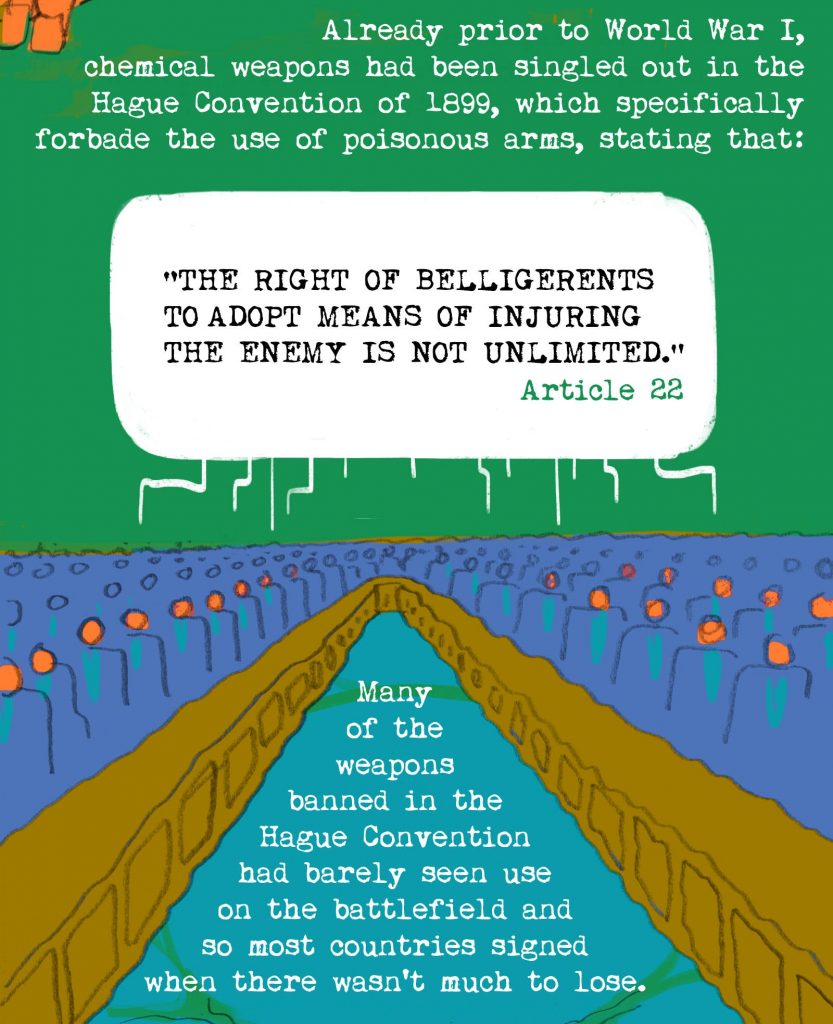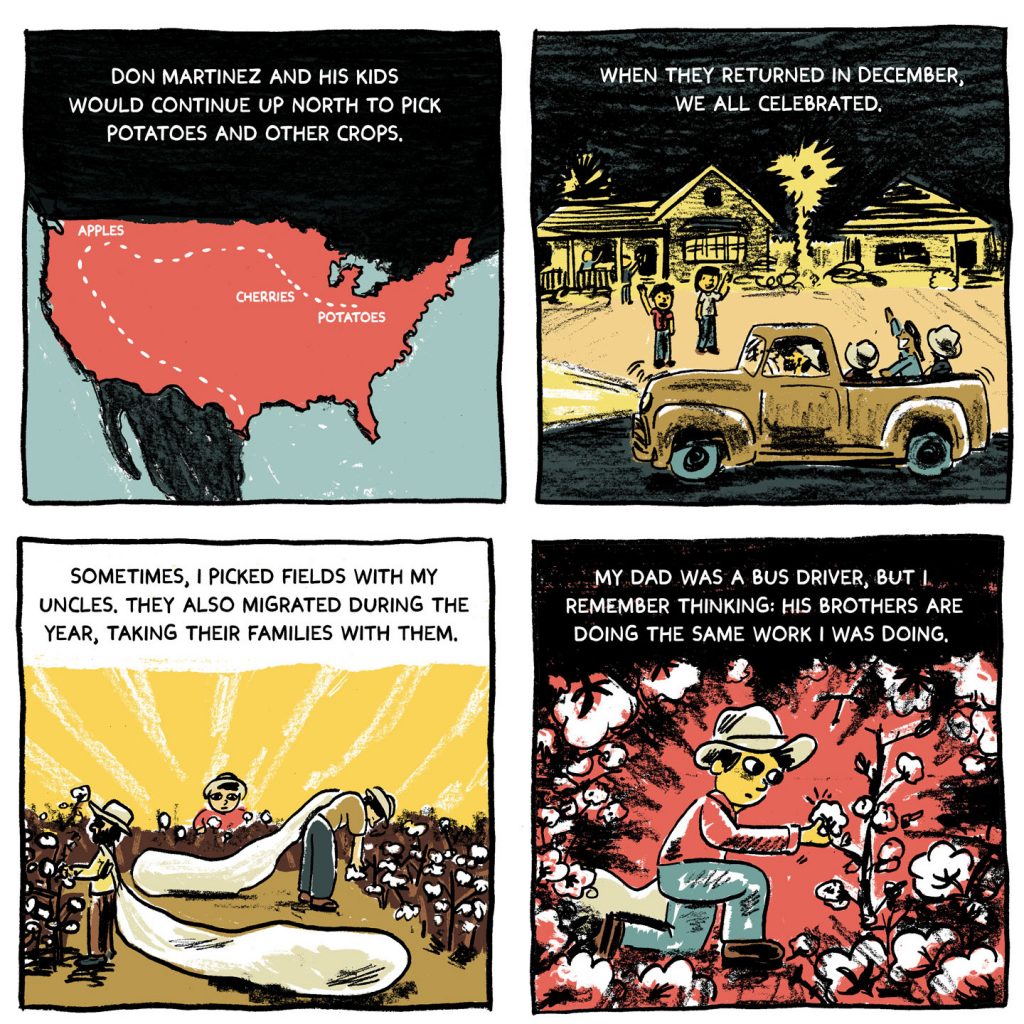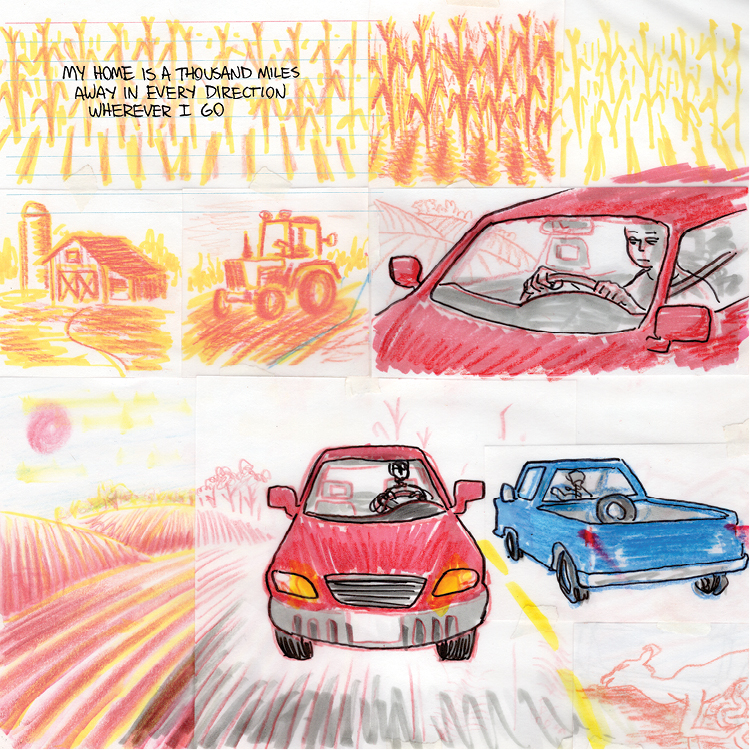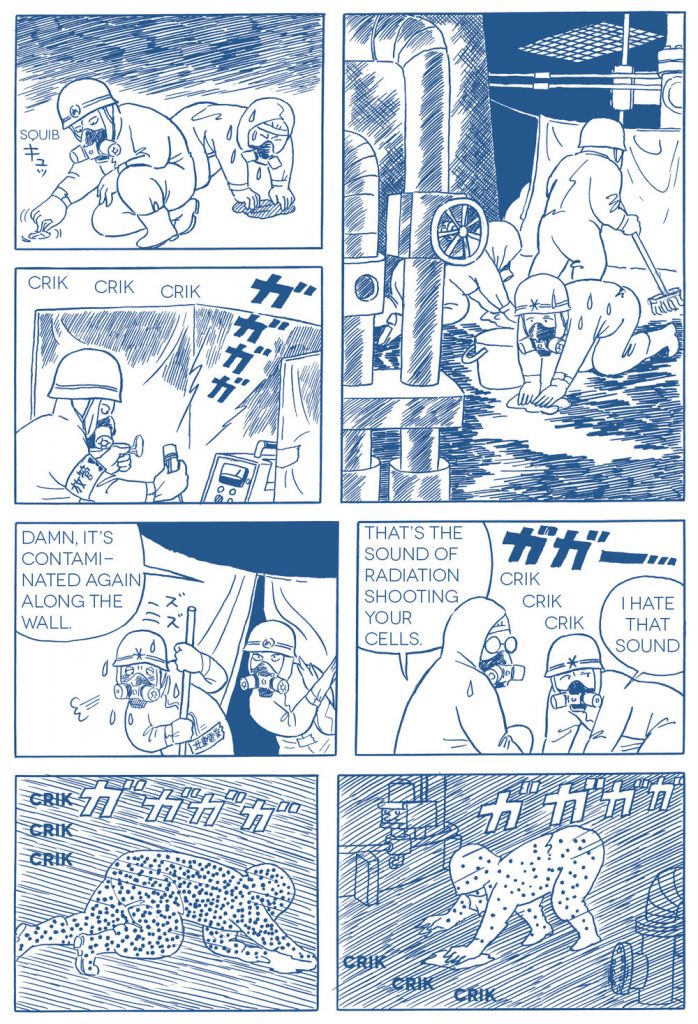Emil Friis Ernst; Emila Medková; José-Luis Olivares; Katsumata Susumu
—————————————————————————————————
Why We Don’t Use Chemical Weapons
Emil Friis Ernst at the Nib:

—————————————————————————————————

Emila Medková: The Magic of Despair
From Krzysztof Fijałkowski at Tate Papers:
Photographs such as Explosion insinuate a dry, bitter humour typical of the poems and paintings of post-war Czech surrealism, but it is not one that squares easily with André Breton’s ‘black humour’ characteristic of French surrealism during and after the 1930s. Indeed, as the Czechs already recognised, the conditions for their laughter were now radically different. Vratislav Effenberger, who had taken over effective leadership of the group after Teige’s death, was to note their shift, and how their pervasive and concrete nature made photography their appropriate witness:
I wasn’t willing to swear on the dogma of ‘liberty-love-poetry’. This utopian maxim could only have muted everything that still blazed within surrealism. … The streets in which surrealists were looking for the marvellous had changed between the wars. And from the 1940s; it was a different irrationality that I had encountered there. This irrationality, produced by a decadent rationality, burst with a humour so objective that all you had to do was place it in front of a camera or on a stage for its rationalist shell to crack open and a purifying sarcasm to leap out.
—————————————————————————————————
José-Luis Olivares at Popula:

—————————————————————————————————
‘Fukushima Devil Fish’: A Nuclear Pastoral
Ryan Holmberg at the New York Review on newly translated work by Katsumata Susumu:
Deep Sea Fish, with its juxtapositions of familiar folklore characters and motifs with themes of displacement and nuclear industrialization, provided an elegiac window onto how the Tohoku region has struggled not only because it is more prone to natural calamities (including three major tsunamis since the late nineteenth century), but also because the land and its peoples have been subject to discrimination and exploitation by government and industrial powers in Tokyo since the advent of the modern era. Saddling Tohoku with the nation’s three largest nuclear complexes—the Fukushima Daiichi facility, the even bigger Kashiwazaki-Kariwa Nuclear Power Station in Niigata, and the behemoth fuel reprocessing and waste storage facility in Rokkasho in Aomori—is just one example. In other words, Deep Sea Fish revealed Katsumata’s personal geography and compromised pastoral landscape as a map to a better understanding of how the 2011 disaster was, above all, a disaster for northern Japan.
—————————————————————————————————

Cement Mixer – 8-21-18 – by Caleb Orecchio
